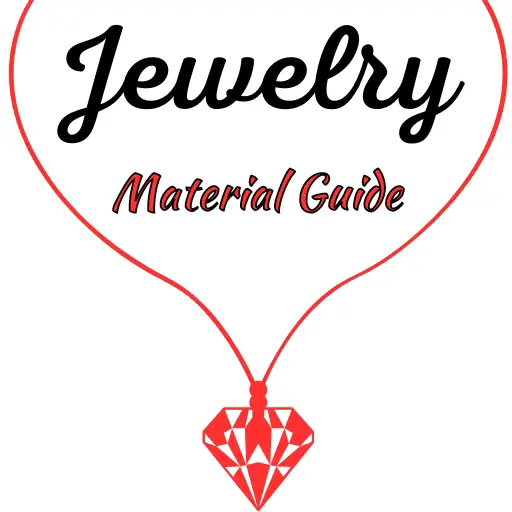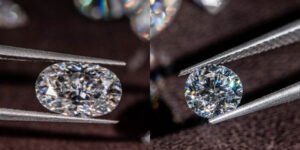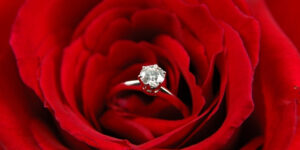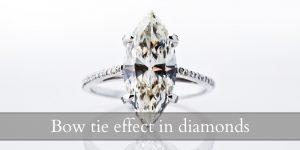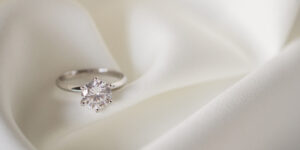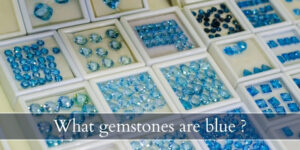Sapphires and aquamarine are two of the most beautiful blue gemstones out there. They’re also two stones that were in the late Princess Diana’s jewelry collection. The aquamarine ring is now worn by the Meghan Markle, Duchess of Sussex, while the sapphire is worn by Kate Middleton, Duchess of Cambridge.
These two beautiful blue stones have long been used in intricate jewelry, though there are great differences between them. Let’s take a look at them, and hopefully this post will help you choose one for your own jewelry set.
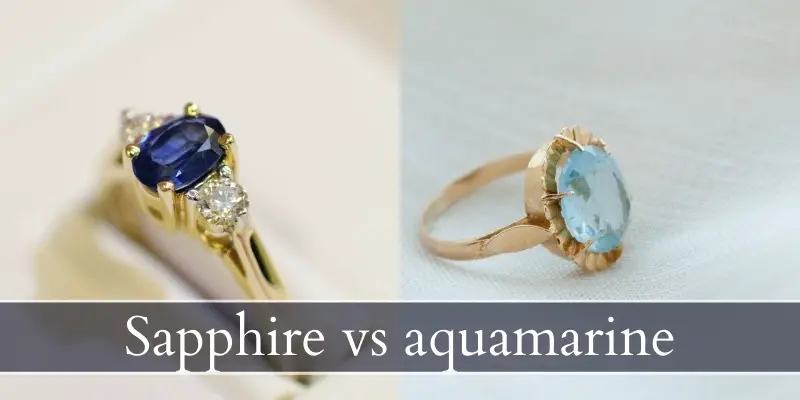
Sapphire vs aquamarine
Sapphire has a deeper, darker indigo color while aquamarine has a lighter sea blue (blue with slight green tone). Because sapphires form differently they often have visible inclusions and thus may not be clear, while aquamarine is easily found with perfect clarity and no visible inclusions.
Unfortunately an aquamarine gemstone may lose its color if left in the sun for a long time, while a sapphire does not. There is also a difference in hardness that makes sapphires much stronger than aquamarine, meaning different stone settings.
What is sapphire ?
Sapphires are a type of corundum, one of the hardest minerals after diamonds. Sapphires are mined from different places in the world, and their color name is often coded after that region, but it does not mean the sapphire itself comes from there. For example Myanmar is famous for producing a perfect royal blue in sapphires, though you may find this color label applied to a sapphire mined in Afghanistan or Colombia, for example.
These deep blue stones have been associated with royalty from ancient times, and were considered one of the 5 precious stones, along with diamond, emerald, ruby, and amethyst. You may also know these as cardinal stones.
What is aquamarine ?
Aquamarine is a type of beryl, just like emerald. Aquamarines are considered semi-precious stones compared to sapphires, and thus won’t be as expensive as a sapphire.
Due to their name and resemblance to sea water in color, aquamarine stones have been considered lucky charms for sailors, to protect them from rough seas and drowning.
Read also: Ruby VS Garnet
1. Aquamarine is always a lighter blue than sapphires
There is a significant difference in color between aquamarine and sapphire. Aquamarine is a type of beryl, and it will always have a very slight green/yellow tone to its blue, no matter how light or dark it is. Even the darkest aquamarine is not as deeply blue as a sapphire.
In general these gemstones range from near-white to seafoam blue to icy blue and almost (almost) sky blue. You won’t get a very saturated (heavily pigmented) aquamarine because these gemstones are incredibly clear, so they will always appear light.
By comparison sapphires have a deep, deep blue that ranges from indigo to dark inky blue to a lighter, washed-out indigo. Sapphires are considered best when they have a slight purple flash to them.
2. Sapphires often have inclusions, aquamarines are usually clear
Sapphires often have inclusions, be they a slight crack, another mineral, tiny needles, anything that may compromise the clarity of the stone. For this reason finding a perfectly clear sapphire is difficult, and also very expensive.
Also because of this, sapphires are often enhanced or treated. They are heat treated to being out their color, which proves to be a dramatic change from light blue to deep blue. They may also be filled with glass or a polymer, to enhance clarity and cover any cracks.
During the heat treatment sapphires lose most of their inclusions, which also makes them lose any asterism they may have had.
Aquamarines are much easier to find as a clear, eye-clean stone meaning no inclusions or imperfections are visible with the naked eye. However these gemstones may also be heat treated to bring out more blue. The difference is less dramatic than in sapphires, because it’s more of a hue change, with less green present in the treated aquamarine.
3. Aquamarine is a softer, brittle stone while sapphire is durable
When it comes to a stone’s hardness, the sapphire wins because it’s a much tougher stone than aquamarine. To put things into perspective sapphires score a 9 out of 10 on the Mohs scale of hardness, while aquamarine score 7.5-8. Diamonds score a perfect 10.
This means your sapphire is going to stand the test of time better than aquamarine. It will resist scratching, chipping, and abrasions much better than aquamarine.
Aquamarine is no fool either, since we have examples of prong-set aquamarine rings that have lasted for decades, at least.
4. Sapphires keep their color, aquamarine may fade to white
Each and every gemstone is different, and the way their color reacts to sunlight differs. Aquamarine is going to slowly but surely lose its color in sunlight, if kept out in the sun for long periods of time, just like amethyst. The color can be brought back by irradiating the aquamarine stone, though not all jewelry stores offer that service. So it’s best to keep this gemstone out of direct sunlight as much as possible.
Sapphires on the other hand resist sunlight much better, and they are not prone to losing or changing their color. This means you can safely wear them in direct sunlight and keep them as everyday jewelry.
However both sapphire and aquamarine gemstones need occasional cleaning at home, to make sure there is no grime or buildup on them.
5. Aquamarines are much more affordable than sapphires
Because sapphires are considered precious stones they cost much more than aquamarine. However, a treated sapphire may be of the same price range as an untreated aquamarine, even with similar carat size. And lab-grown sapphire are always going to cost less, possibly less than a natural aquamarine.
For example a natural, untreated sapphire of around 1 carat may be anywhere from $450 to $1600 per carat. Clarity, color, and where the stone comes from are going to matter a lot when judging a sapphire’s total worth.
Meanwhile aquamarine is always a natural gemstone, and may be around $700 per carat if dealing with smaller stones. Larger aquamarine may get progressively more expensive.
Can you use aquamarine instead of sapphire ?
Aquamarine cannot be used in place of sapphire, because it’s a very different kind of blue and it will eventually fade color. We don’t recommend using aquamarine instead of sapphire if you’re going for a specific shade of blue. Sapphire and aquamarine cannot be compared in terms of color, and most often color is a big factor in deciding prices and beauty in gemstones.
Even the darkest aquamarine, heat treated, cannot get to the deep blue color sapphires exhibit. And non-treated sapphires cannot pass as aquamarines either, since they have an entirely different hue.
If you’re looking for a dupe for sapphire, at least in terms of color, you’re better off with tanzanite, blue spinel, or iolite. These have a deeper, darker blue with indigo and violet hues, nd they come at a lower price.

I’m the main author for jewelrymaterialguide.com. I started this site after we did tons of research before our wedding and noticed that there is information about rings, jewelry, and so on that is really hard to find on the internet.
